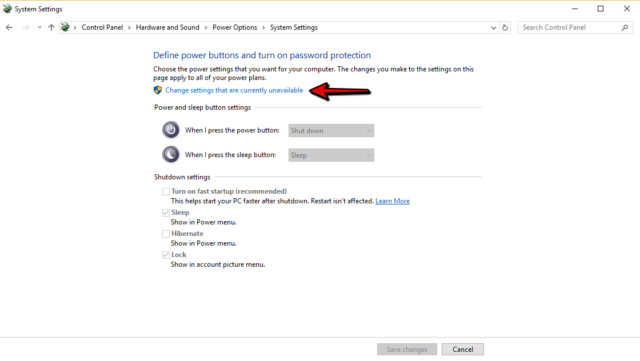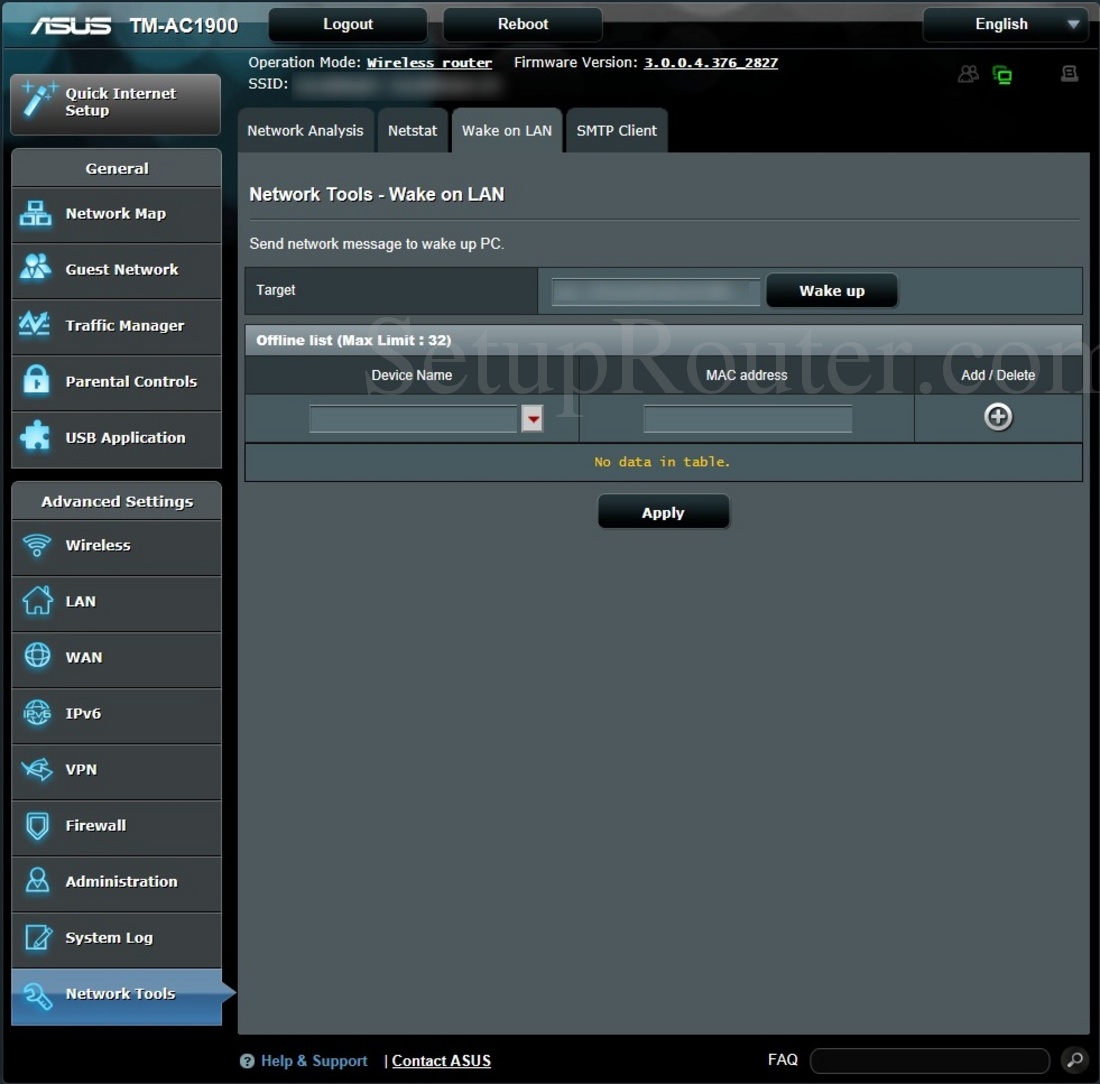

- Asus router app wol wake on wan install#
- Asus router app wol wake on wan update#
- Asus router app wol wake on wan windows#
– Added option to left click trayicon and send a WOL to the default server – Bug fix: cosmetic fix when the list would be empty – Bug fix: at first start, occasional 3 empty rows would appear

– Build number visible in menu and settings window – Added confirmation dialog when clearing all entries
Asus router app wol wake on wan install#
– Setup now allows to install miniWOL on a portable device – no longer a separate installer needed for using the application as a portable app.Ģ.1.2 – Mac only: WOL after your computer wakes up from Sleep added (per device configurable).Ģ.1.1 – Mac only: Icon fix for Big Sur, Windows: Bug fix in ARP, added portable version.Ģ.1.0 – Several fixes and features added: – Added the option to invert the icon in the system tray (previously existed for Linux already) – Added the option to send a Wake On LAN to devices when your PC/Mac wakes up from sleep
Asus router app wol wake on wan update#
– Update on how the controls are positioned in the Settings window – Added option to execute a script after sending a Wake On LAN If it is running in the standard location, then the preferences will be saved in the standard location (C:\Users\\ etc.). If it is NOT running in this standard location, then it will save the preferences file in the same location as where the EXE is. The application will detect if it was started from the standard Program Files location, which typically would be somewhere in C:\Program Files(x86) since it is a 32bits app. Note: This used to be a separate version, but this is no longer the case, and integrated in the standard setup. To use miniWOL as a portable application, simply run setup and select the desired directory.
Asus router app wol wake on wan windows#
Some example screenshot of the menu, from left to right MacOS normal theme, MacOS DarkTheme, Linux (Mint) and Windows 10: All this without thinking or seeing all the in-depth details (once you’ve configured it right). The intend of miniWOL is to have a small icon in your SysTray (Windows) or Menubar (Linux and MacOS X), where you can send a Wake On LAN magic packet to a defined server. So by default: use miniWOL for devices in your local network.įor waking up devices over the Internet, you will need to do some extra leg work to get everything configured correctly. you’re in the office or traveling), will require some trickery including, but not limited to, port forwarding. To wake up a device at home, over the Internet (ie. MiniWOL, and Wake On LAN in general, is intended to be used in a local network, meaning: wake up a network device in the same network you’r in (at home or in the office). See also these 2 Microsoft Technet articles: About Subnet-Directed Broadcast and Choose Between Unicast and Subnet-Directed Broadcast for Wake On LAN. This is unfortunate, since broadcasts aimed at a specific device (unicast) appears more secure than subnet-directed broadcast. This technique does seem to be required for some devices to work with WOL. Naturally, you can guess that this is not 100% fool proof, but it’s better than nothing, and in your local network (at home or in the office) this might be safe enough.Īdditionally a broadcasting address (or mask) is supported, which allows you to send the magic packet to the entire network or parts of the network (default: 255.255.255.255). To prevent that just anything can wake up such a network device, a very specifically formatted “magic packet” has to be send over the network. Normally just one single packet should do the trick, but most Wake On Lan applications actually send more than one packet – just to make sure. The Magic Packet ( UDP) is typically send to port 9, some systems default to port 7, and some systems allow you to define your own port number. However, Apple had to change a few things ( moving to 64 bit, using Cocoa instead of Carbon, and the need to sign and notarize applications – I suspect Microsoft will probably follow soon) so while revamping the Mac version, I revamped the Windows version as well, and added a 64-bit Linux version as well (by request). The old miniWOL has been good so far, and plenty folks seem to have a good use for it privately and professionally. Well, after a bit of searching I could not find anything suitable or to my liking and I decided to just write something myself. I wanted just a simple menu in the System Tray (Windows: next to the clock, usually the lower-right corner of your screen) or Menubar (MacOS X – top of your screen, Linux often at the bottom of your screen). A while back I created a simple application for this – miniWOL – keeping in mind that the user may not be too familiar with all the configuration details (see: previous miniWOL versions). Waking up devices that are network connected, can be done with the so called “ Wake On LAN” feature provided by certain devices (like for example a NAS, FileServer, or even a PC).


 0 kommentar(er)
0 kommentar(er)
